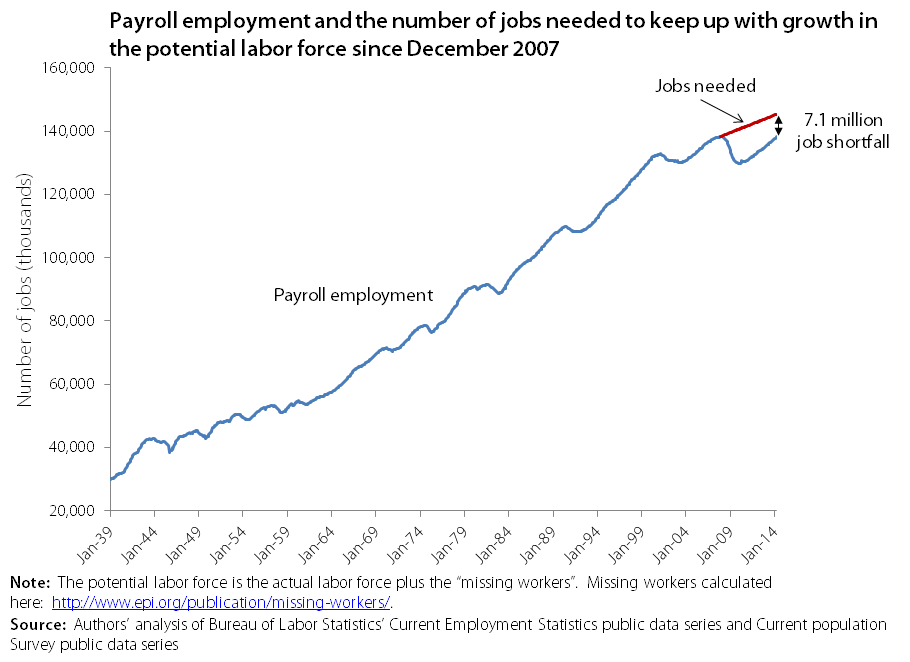
A line chart is a collection of numeric data that is plotted with a connecting line on an x- and y-axis, where the x-axis most commonly indicates a time variable.
An example would be this chart from FactTank that looks at the number of jobs in the USA from 1939 to 2014:
